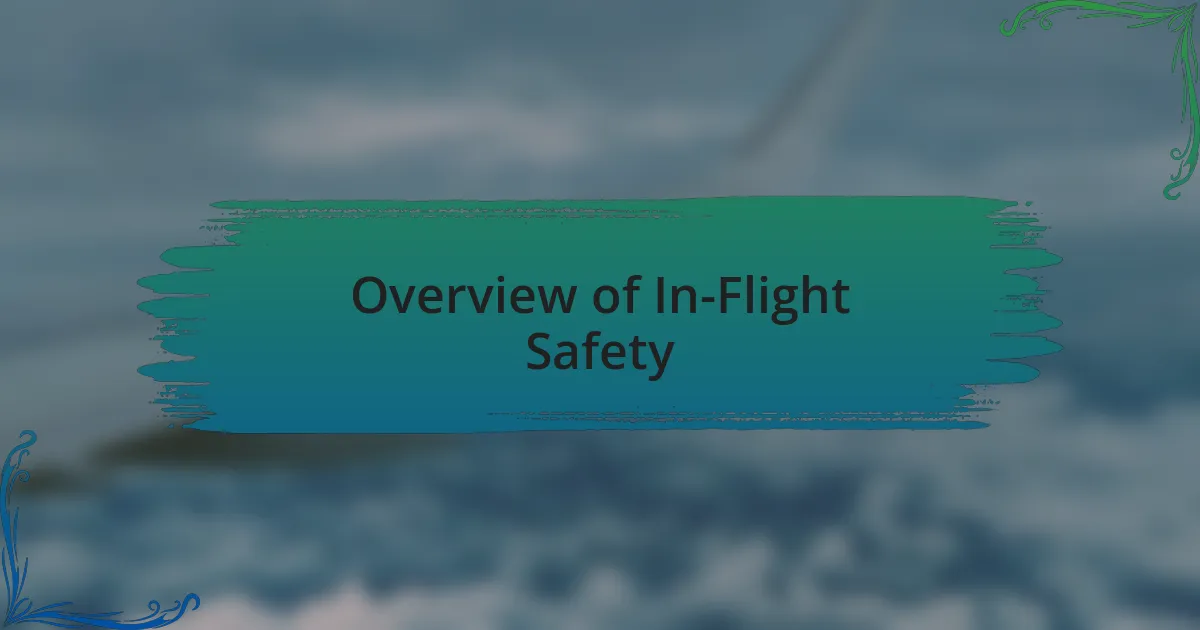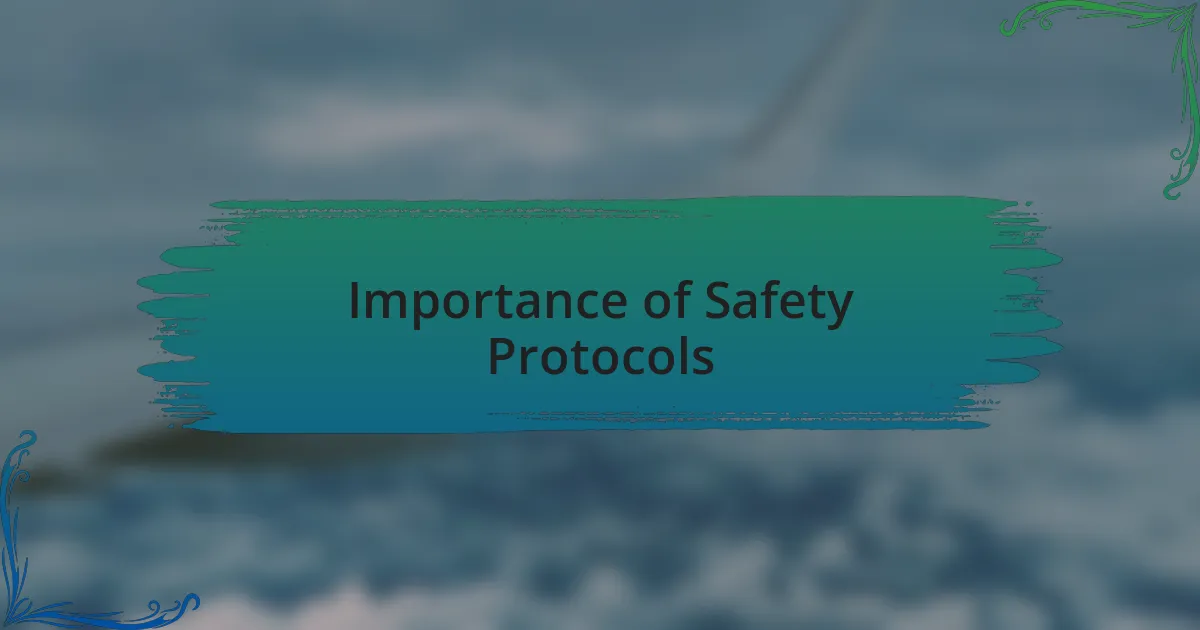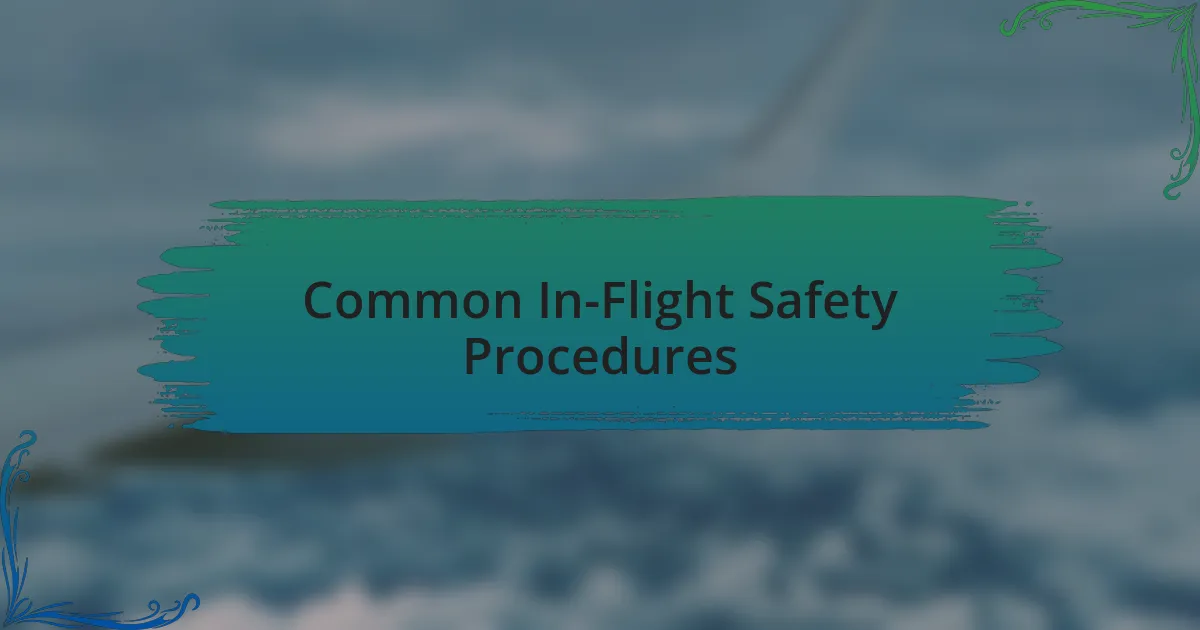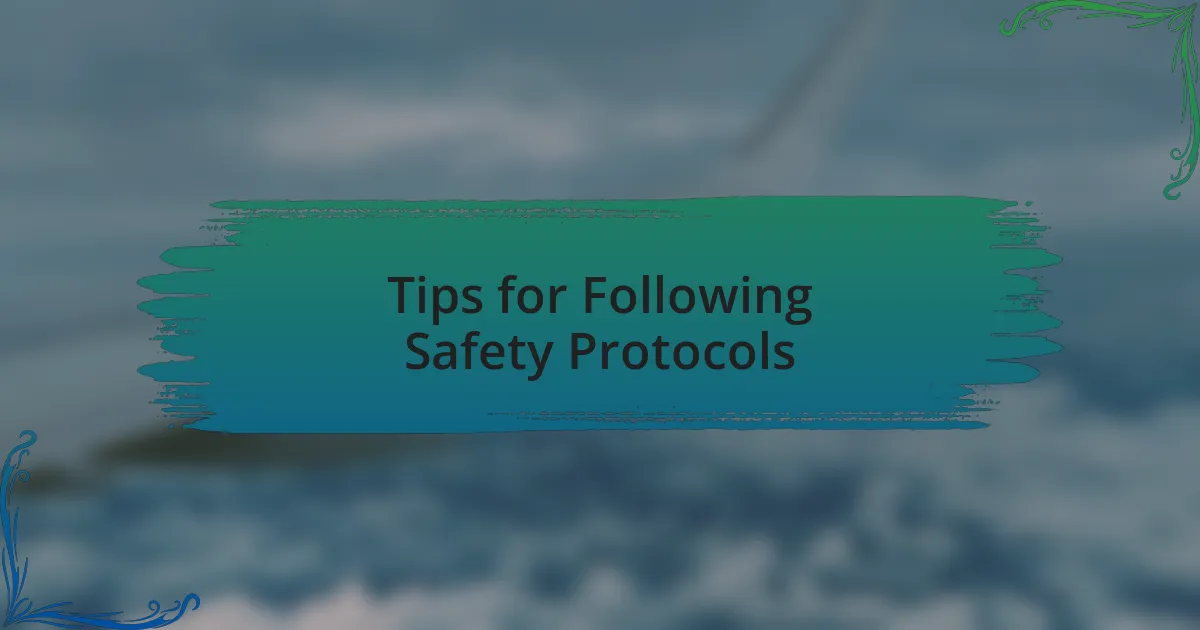Key takeaways:
- In-flight safety protocols are essential for passenger security, emphasizing the need for awareness and adherence during flights.
- Thai Airways exemplifies high safety standards through comprehensive crew training and a strong commitment to aircraft maintenance.
- Effective communication of safety procedures, including engaging demonstrations, enhances passenger understanding and readiness for emergencies.
- Passengers play a crucial role in creating a safe travel environment by being attentive and participating in safety briefings.

Overview of In-Flight Safety
In-flight safety is a crucial aspect that must never be overlooked. I remember my first flight; the cabin crew effortlessly executed the safety demonstration, and I couldn’t help but wonder how much expertise and training went into that seemingly simple presentation. It’s a moment filled with growing awareness, where one realizes that these protocols are designed to keep us safe, and they deserve our full attention.
Every airline, including Thai Airways, has comprehensive safety protocols tailored to ensure passenger safety. It’s not just about the seatbelt sign; the crew is trained for various emergency situations, from turbulence to evacuations. Have you ever considered how those drills and simulations prepare them to handle unexpected events? I find it fascinating how their training translates into a sense of security for us travelers.
Reflecting on my experiences, I’ve learned that understanding these safety measures allows for a more relaxed travel experience. For instance, the importance of knowing the nearest exit can’t be understated, especially in unfamiliar aircraft. As I remind myself that safety protocols are in place for a reason, it helps me embrace the journey with a greater sense of peace.

Importance of Safety Protocols
Safety protocols in aviation are the backbone of our peace of mind during flights. I vividly recall a flight where turbulence hit unexpectedly. The calm manner in which the crew managed the situation, reinforcing the importance of fastening seatbelts, made all the difference in how I experienced that uncertainty. Can you imagine the chaos if those protocols were neglected?
Each time I board a Thai Airways plane, I’m reminded that these safety measures are not just guidelines; they are lifelines. I often find myself looking around the cabin during the safety briefing, appreciating not just the information provided, but the commitment of the crew behind it. It’s in these moments that I realize that their thorough training and preparation empower me to trust that they will handle any emergency with confidence and competence.
What’s truly remarkable is how safety protocols foster a collective sense of responsibility among passengers. I’ve noticed that when the crew emphasizes safety, it encourages everyone to stay alert and engaged. It’s comforting to think that adherence to these protocols can make a significant difference, not only for my survival but also for the well-being of those around me. Isn’t it reassuring to know that we all play a part in creating a safe travel environment?

Thai Airways Safety Standards
Thai Airways adheres to some of the highest safety standards in the aviation industry, putting an emphasis on comprehensive crew training and frequent safety audits. I remember a particular moment when I overheard a flight attendant reviewing emergency procedures before takeoff. Their commitment to being prepared for any scenario struck me as truly vital. Isn’t it reassuring to fly with an airline that takes its safety measures seriously?
One aspect that stands out for me is the airline’s diligence in maintaining its fleet. Thai Airways not only follows stringent aircraft maintenance protocols but often exceeds regulatory requirements. I once took a flight where a small delay was announced due to a routine check. Instead of feeling frustrated, I felt relieved knowing that safety was prioritized. Would you feel the same way, knowing that such meticulous care can make all the difference on your journey?
Moreover, during the pre-flight safety demonstration, I noticed how the crew engages with passengers, making sure that everyone understands the protocols. It’s heartening to see their genuine effort, as if they’re personally invested in each traveler’s well-being. That connection helps to demystify the procedures, creating a calmer atmosphere. Have you ever experienced that sense of unity in safety, realizing we’re all in this together?

Common In-Flight Safety Procedures
Safety demonstrations are a common sight before any flight, and they play a crucial role in keeping everyone informed. I remember a time when the flight attendant used humor to engage the passengers during this routine, which really caught my attention. It turned a potentially monotonous moment into something memorable and made me think about how effective communication can ease anxieties about safety.
Seatbelt usage is another fundamental safety protocol that I’ve come to appreciate. I once traveled during turbulent weather, and hearing the captain’s calm reminder to remain seated made me feel more secure. It’s fascinating to realize how something so simple as buckling up can enhance our safety amidst unpredictable conditions. Have you ever noticed how putting on a seatbelt can feel like a comforting embrace during a flight?
Another procedure that stands out is the emphasis on emergency exits and evacuation routes. On one flight, the crew conducted a thorough explanation of these procedures, ensuring everyone was aware of their nearest exit. I found comfort in their clear and confident approach; it reminded me that in any situation, knowledge truly is power. Have you experienced that peace of mind when you know you have a plan in emergency situations?

Personal Experiences with Safety Protocols
I’ve had flights where the importance of safety protocols became starkly clear. One particularly memorable experience was during a night flight when the cabin lights were dimmed. As the crew demonstrated how to use the oxygen masks, I felt a mix of anxiety and assurance. It made me realize how prepared the staff was and how vital it is for passengers to be attentive. Have you ever thought about how being well-informed can truly change your feelings during a flight?
On another occasion, I was seated near a family traveling with young children, and the way the crew engaged with them during the safety briefing struck me. They tailored the demonstration so the kids were not just listening but genuinely interested. It reminded me that safety protocols can be communicated in ways that resonate with everyone. Isn’t it fascinating how a little creativity can make a serious topic more relatable for all ages?
During a flight, I faced sudden turbulence, and the crew’s swift response was remarkable. They moved calmly through the aisle, checking on passengers while reminding us to stay seated with our seatbelts fastened. Watching them handle the situation with poise eased my nerves significantly. Have you ever noticed how the crew’s demeanor can transform an unsettling moment into one of reassurance? It’s a powerful reminder of the essential role they play in our safety.

Tips for Following Safety Protocols
When it comes to following safety protocols during a flight, I’ve found that preparation is key. I always take a moment to review the safety card in the seat pocket as soon as I settle in. Each time I do this, I feel a sense of empowerment, knowing what to do in case of an emergency. Have you ever felt that extra layer of confidence just from being aware of your surroundings?
Another tip I recommend is to listen closely during the safety briefing, even if you’re a frequent flyer. There was a time I almost tuned out because I thought I knew it all, but I caught an important detail about the nearest exit that was actually different from my prior flights. It’s amazing how every aircraft can hold different safety nuances, isn’t it? Engaging with the demo not only keeps you informed but also keeps your fellow passengers safe.
Finally, I make it a point to ask questions if I’m uncertain about safety protocols. Once, I was curious about the procedure for a possible emergency landing and inquiring about it led to a fascinating discussion with a flight attendant. Their insights made me feel part of a community, reinforcing that we’re all in this together. Don’t you think that having open communication with the crew enhances the overall safety experience?

Conclusion and Final Thoughts
In reflecting on in-flight safety protocols, I realize how vital it is to view these measures not merely as tasks, but as essential components of our journey. I remember a flight where we encountered severe turbulence. The calmness I felt came from knowing the protocols and being prepared. This experience reinforced that safety measures truly enhance our overall flying experience.
It’s also intriguing to think about how our collective adherence to these safety protocols fosters a sense of community among passengers. I once found myself in a situation where I noticed a fellow traveler struggling with a safety belt. The camaraderie that emerged as I assisted them, paired with the knowledge that we were both committed to safety, was heartwarming. Isn’t it comforting to know that we can support one another while prioritizing our well-being?
Ultimately, embracing in-flight safety protocols is about more than just compliance; it’s about confidence and connection. Every time I engage with the crew or another passenger about safety, I feel reassured and more at ease. These interactions might seem small, but they create a safer environment where we can all travel together. Wouldn’t it be wonderful if we could all approach flying with the same sense of responsibility and care?